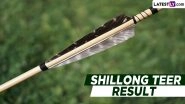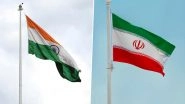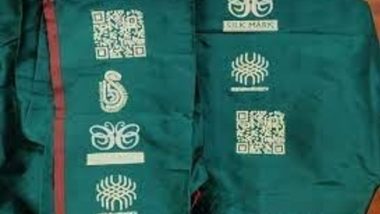Varanasi, July 25: A QR code will now be woven into handloom Banarasi sarees to affirm their genuineness. A research team at the Mechanical Engineering department (Industrial Management) of Indian Institute of Technology, Banaras Hindu University (IIT-BHU) has developed a new technique that has inbuilt, weaved QR code containing details of saree, handloom mark logo, Silk Mark and Banaras Geographical Indications (GI) logo.
The research work was done by IIT(BHU) and Angika co-operative society for confidence-building measures using QR code and logos on sarees in the handloom industry.
The researchers said that the inbuilt weaving of logos in the saree will authenticate the purity of handmade handloom saree. It will give confidence to customers to pick the right handloom sari and curb the misuse of the handloom and its products. Prof. Prabhash Bhardwaj said that the Varanasi handloom industry has to adopt modern approaches.
"According to the study conducted by our research scholar, there is huge potential for incorporating IT based applications in this industry. At present, our research team came up with QR code technology and logos weaving on saree," he said.
The manufacturer can weave the QR code on saree with details of his own firm and manufacturing. Whenever customers want to know about a product, he has to use the scanner in his mobile to know about it. He will get all details entered in the QR code, like place of the manufacturer, date of manufacture, etc. These measures will create confidence in customers and increase sales.
Research scholar M. Krishna Prasanna Naik, who is working on the growth of the Banaras handloom industry, said that the Banaras handloom industry is facing major issues, with marketing being one of them.
According to his study, most customers are not aware of the difference between handloom and power-loom made saree. Only a limited number of customers know about the handloom mark and GI mark.
His study also shows that customers are unaware of whether sellers provide real handloom marks or duplicate handloom marks with products. So, he came up with the idea of sarees having logos and QR code.
Naik said that the fully designed saree consists of 6.50 meters in length in which 1-meter blouse pieces are included. After the sari part is completed, a part of 6-7 inches of plain fabric before the blouse is weaved. This patch contains the QR code and the other three logos.
Incorporating these logos in this extra fabric piece, will not reduce the fabric strength and style and the looks of the saree will remain intact. Amresh Kushwaha, chairman, Angika co-operative society and Angika, a Varanasi based designer, have implemented the idea for the first time.
They said that due to the lack of proper use of GI marks and handloom marks, customers are not sure about the originality of the saris.
"So, we are trying to incorporate this QR code and handloom mark logs in our sarees. It will help our local and foreign customers to differentiate between handloom products and power loom products," they said.
(The above story first appeared on LatestLY on Jul 25, 2021 10:26 AM IST. For more news and updates on politics, world, sports, entertainment and lifestyle, log on to our website latestly.com).













 Quickly
Quickly


